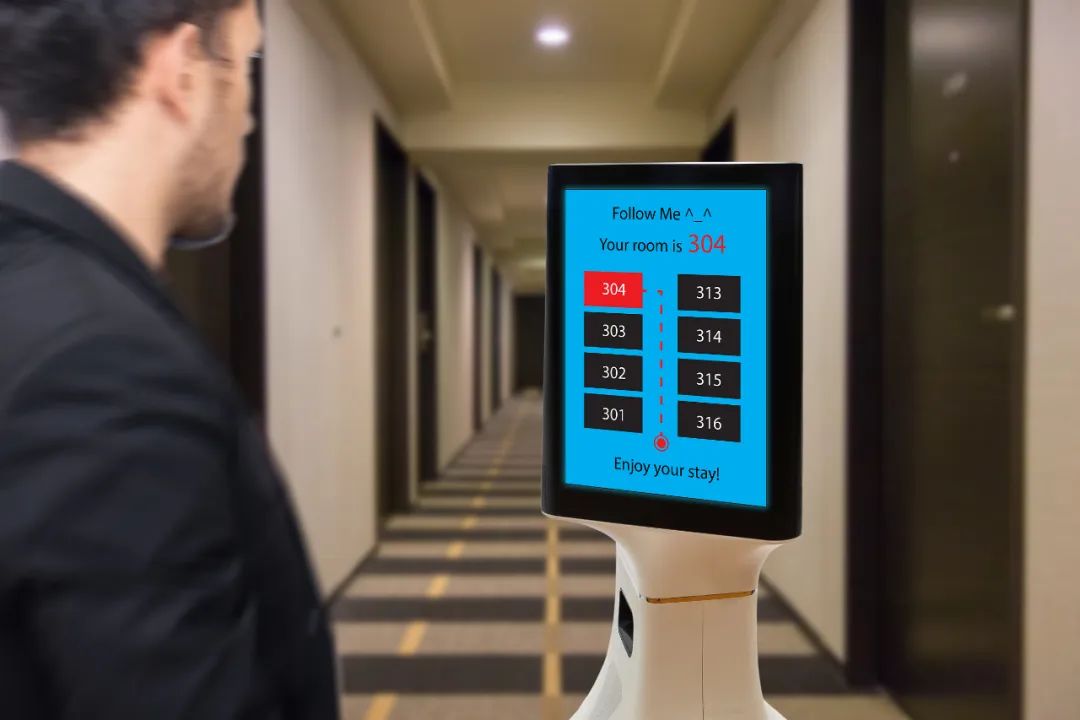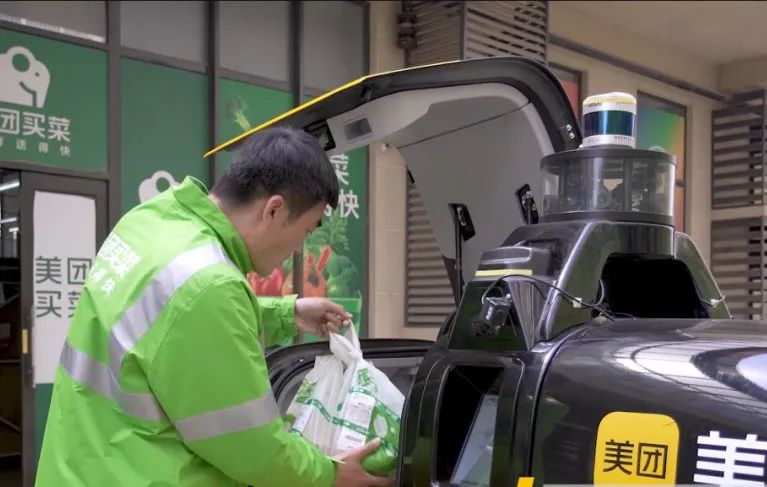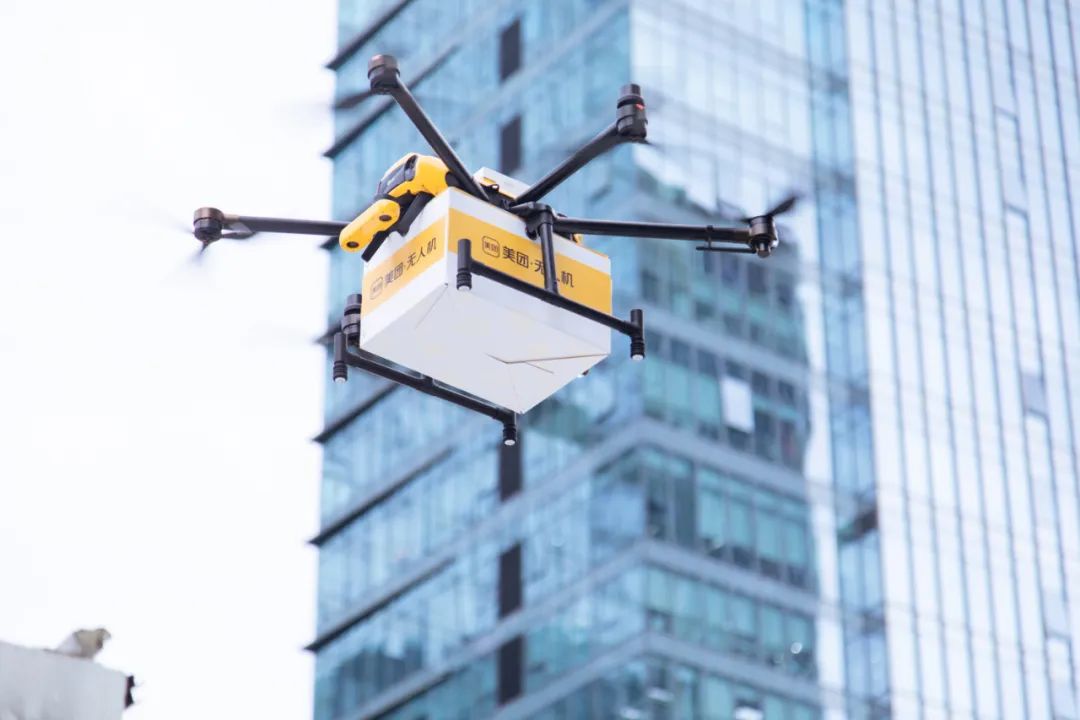“Hello, could you please press the elevator for me?”
In recent years, many students staying in high-end hotels may occasionally encounter such naive “robot waiters” in the elevator. For small items such as takeaway, slippers, and drinking water, the hotel can safely hand them over to these robot waiters and let them be delivered to guests.
Similarly, these mobile robots also appear in restaurants, shopping malls, and high-end property centers. They either “serve” dishes for people, or provide people with guidance in shopping malls, and some are responsible for cleaning the ground.
It seems that overnight, robots have entered the tertiary industry from the field of industry and manufacturing, “cross-industry”.
iiMedia Consulting predicts that the market size of China’s service robots is expected to reach 95.92 billion yuan in 2023, surpassing the market size of industrial robots by then.
In China, not only a series of start-up companies have begun to focus on the robot track, but Meituan and Xiaomi have also increased their investment in the robot industry.
Why have service robots become a hot topic in China in recent years, and what impact will robots have on the service industry?
01
Robots enter the tertiary industry
In November 2022, the Ministry of Human Resources and Social Security released the ranking of the 100 occupations that are “most in short supply” in the third quarter of 2022, of which 37 belong to social production service and life service occupations, including restaurant waiters, cleaners, couriers, etc.
When the demographic dividend fades and the labor gap gradually expands, the offline service industry will be greatly impacted.
According to statistics, my country’s working population began to decline in 2012, with an average annual decrease of more than 3 million. In the labor-intensive, boring and repetitive positions of cleaners, couriers, and porters, it is already a serious fact that the labor gap is increasing year by year.
Entrepreneurs have long tried to make robots a new “labor force”, but for a long time, service robots were difficult to commercialize due to the immature industrial chain and scenarios.
In recent years, however, some welcome changes are taking place.
Benefiting from the development of mobile payment and consumer electronics industry, the price of 3D cameras has dropped significantly in large-scale applications and industry competition. Relevant technologies have overflowed and been applied to the robot industry, which has greatly improved the perception ability of robots, and can more accurately identify and avoid obstacles in three-dimensional space, and plan routes, and has also been blessed by mature industrial chains, gaining the ability of industrialization.
LiDAR, another important perception module, has also benefited from the explosion of industries such as autonomous driving and household sweeping robots.
The maturity of both the industrial chain and technology has allowed robots, which were not commercially available until now, to gradually enter the offline service industry.

Robot butler guides customers to reserved rooms | Source: Visual China
Since 2021, there have been multiple financings of over 100 million yuan in the robotics industry. Among them, one of the focuses of the capital market is the autonomous mobility of robots. The improvement of perception and obstacle avoidance capabilities and the blessing of automatic driving algorithms allow robots to come to humans more safely and cooperate with humans to complete work, which also provides a basis for expanding the use scenarios of service robots.
In recent years, commercial cleaning, logistics handling, and distribution have all become scenes that have attracted the attention of capital and entrepreneurs. Up to now, the leading enterprises of commercial cleaning and logistics handling robots have exceeded 1 billion yuan in annual revenue.
According to data from the International Federation of Robotics (IFR), in 2021, China’s service robot market has reached 30 billion yuan, accounting for 36% of China’s robot market, second only to industrial robots.
02
Robots with more “fireworks”
Not only start-up companies, but also large companies are betting heavily on the robot track. For example, Tesla, the leader in electric vehicles, hopes to use its accumulation in the field of unmanned driving technology to realize “curve overtaking” in the field of robotics, and to launch “affordable for everyone” household robots in the near future; Amazon has deployed a variety of robotic devices such as sorting, packaging, and autonomously moving logistics vehicles in warehouses to improve logistics efficiency.
In China, it is a little surprising that the company that is “most concerned” with robots is Meituan.
In 2016, Meituan established the W project team internally to explore the business of autonomous vehicles and drones. In 2018, Meituan launched an open platform for unmanned delivery. Up to now, Meituan drones have established 11 routes in Shenzhen and delivered more than 70,000 takeaway orders.
Not long ago, Meituan even established the “Meituan Robotics Research Institute” MARS (Meituan Academy of Robotics Shenzhen) in Shenzhen, which shows its great determination.
Why does Meituan put so much effort on robots? The answer has already been revealed by Meituan CEO Wang Xing at last year’s financial report meeting.
In the earnings conference call in October last year, Meituan CEO Wang Xing said that business development requires not only software but also hardware. A new strategy of “retail + technology”.
In the minds of many people, Meituan is the app that “orders food delivery”. But in fact, Meituan has already penetrated into a wider range of offline retail services.
Before Double 11 this year, Luo Yonghao “came out of the mountain” and turned into a meituan brother to give everyone mobile phones. This advertisement became popular on the Internet. In fact, not only mobile phones, Meituan has already evolved from “delivering food” to “delivering everything”.
If you go to a physical supermarket now, you may meet a Meituan brother in a yellow coat, rushing to the export with various goods in his hand. After proposing the “retail + technology” strategy, Meituan tried to build itself into an online supermarket. Home appliances, clothing, and digital products, all of which were not linked to Meituan, were included in Meituan’s online stores. Ultra.
In terms of contract fulfillment, Meituan also launched various forms such as 30-minute delivery and next-day delivery.
When gradually infiltrating the business from food delivery to “retail”, another component of Meituan’s strategy-“technology” is particularly important.
On the one hand, there is the ever-increasing demand for orders and transport capacity, and on the other hand, the number of express logistics personnel that is difficult to increase. How to use technology to improve logistics delivery efficiency has become an urgent need for companies such as Meituan.
Judging from the current situation, robots such as automatic delivery vehicles and drones are the choices made by Meituan under the “technology” strategy, rather than the “testing the water” of general technology companies.

Employees load the goods ordered by users at the site | Photography: Wu Yong
As the largest life service platform in China, Meituan has many businesses such as shopping, food delivery, grocery shopping, flash shopping, errands, group buying, etc. Whether it is goods picking or logistics distribution, robots have room to play their value.
Let robots approach users and help users solve real problems in order to serve a wider range of people and market needs.
For the robot, the last 100 meters is still difficult. Because the closer you are to people, the higher the uncertainty, and the higher the requirements for robot perception and interaction. For example, it is difficult for a robot to ask for directions in the community like a delivery boy.
However, the value of robots lies in their ability to work collaboratively with humans, improve overall efficiency, find their place in a mature industrial system, and continue to operate.
At the beginning of the Meituan UAV project, Mao Nian, the project leader, had a bold vision—to let the UAV go to the retail store to pick up the goods and deliver them. The near-field retail format like 711 will no longer be affected. Shackled to the address. Retail stores can rent larger stores in a place with lower rents and sell more goods; after drones level the delivery time, consumers will not feel inconvenient because the retail stores are farther away.
Robots are not just products, but a single-point efficiency improvement tool. Just like the relationship between the Internet and digitalization, the large-scale application of robots has become a force that can reconstruct the production structure and industrial structure. And when the road of robots gradually runs through, it will in turn strengthen the power of Meituan’s “retail”.
At the press conference for the establishment of the Meituan Robot Research Institute, one of the company’s slogans was to make robots with “fireworks”.
03
How the robot “lands”
The ideal is plump, but the reality is always skinny. To make the “pyrotechnic” robot truly “land”, the challenges it faces are not only technical, but also social. This also points to the reason why Meituan established the robotics research institute — “to build a bridge between industry and academia.”
Industry-university-research collaboration is not an unfamiliar term, and the advantages of this model are also certain: the industry provides application scenarios and funds, leading academic definitions to research and development, so that academic achievements can be transformed into the industry as soon as possible, and the service industry can be implemented. Different from the laboratory environment, the application of robots in life scenarios requires not only efficiency and economic accounts, but also a set of social logic.
Taking delivery by drone as an example, whether it is a busy city or a remote town, there are problems that the team cannot imagine.
For example, Meituan’s drone was kicked out by the first two communities before it successfully delivered its first real order. The first time was because the take-off and landing point was more than 20 meters away from the gate of the community unit, which affected the nap of a resident’s child. The second time was that the drone equipment used as a public facility did not get the consent of the community owner when it landed.

Meituan’s UAV achieves instant delivery within 15 minutes within 3 kilometers | Photography: Wu Yong
At the same time, the UAV logistics team has to solve the “infrastructure” problem.
Take SF’s drone business as an example. In order to improve the stability of drone flight and ensure safety, they need to go deep into remote villages and towns, install signal transmitters along the route, and provide accurate data to the aircraft and management system. Feng Li, chairman of Fengyi Technology of SF Group, said that the team is only a few hundred people, and the scale is not large. “Our R&D engineers sometimes have to carry the signal transmitter to the site to set it up. This is the reality.”
Finally, in terms of policies and regulations, the airspace management of “low-altitude flight” is a “new issue” in China, and various management departments have no mature experience to learn from. Even if various policies and regulations have been met, residents still have concerns about safety and privacy when facing new things. If the pilot project wants to be promoted to the society, it first needs a series of social governance system norms to dispel the concerns of the local government and residents.
Fortunately, the domestic robot industry is very supportive from top to bottom.
In the “14th Five-Year Plan” Robot Industry Development Plan jointly issued by 15 departments including the Ministry of Industry and Information Technology, the National Development and Reform Commission, and the Ministry of Science and Technology, it is proposed to focus on promoting the development and application of key products such as service robots. Pilot projects for mobile phones are also blossoming across the country.
Karel Capek first coined the term “robot” in his 1921 work, which is derived from the Czech word “robota”, which means “coolie”. Robots are the product of human wisdom and creation, and only by allowing robots to evolve more powerful capabilities and have more room for development can humans truly escape from “coolies”.
This article is transferred from: https://www.geekpark.net/news/312163
This site is only for collection, and the copyright belongs to the original author.